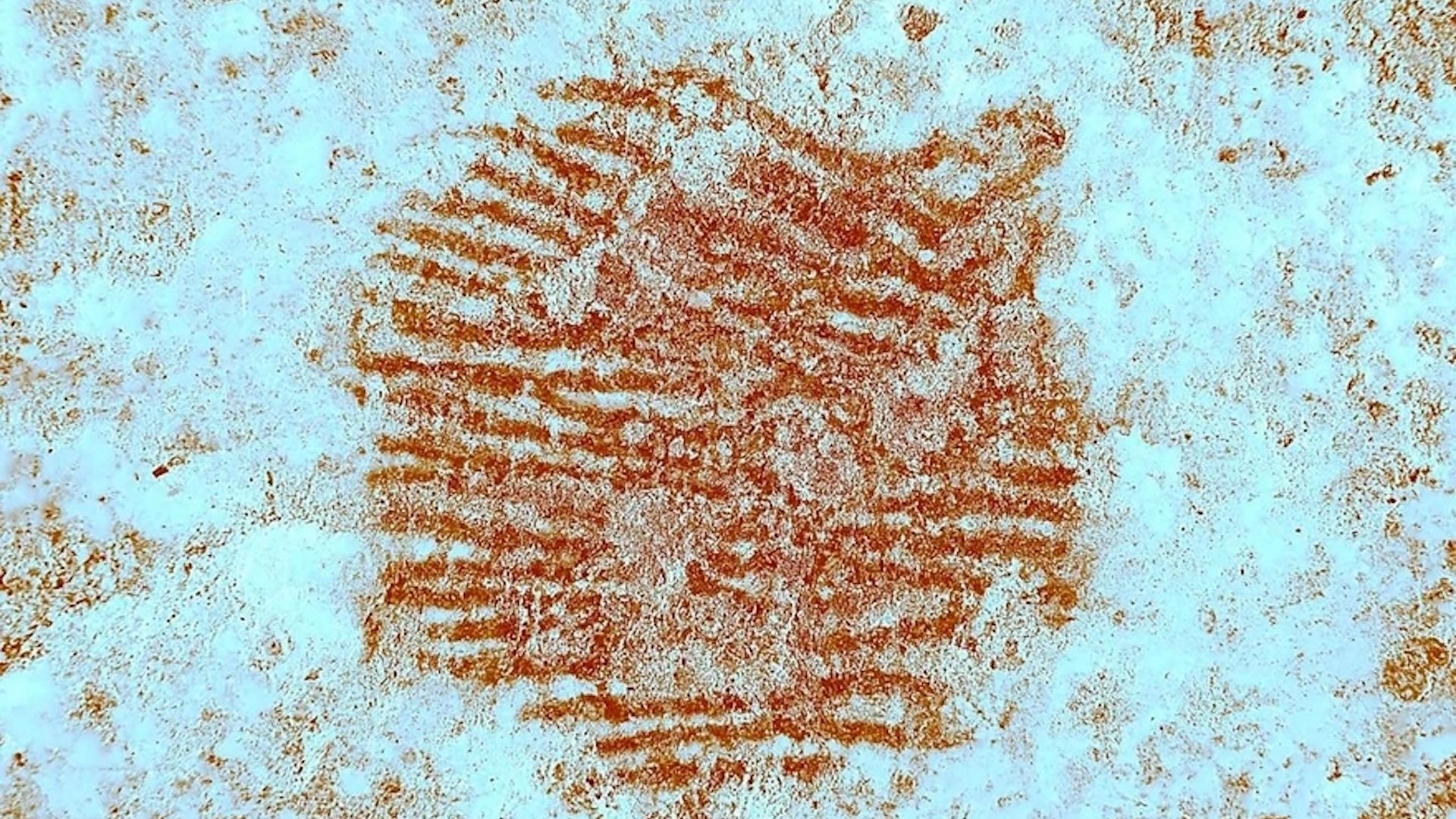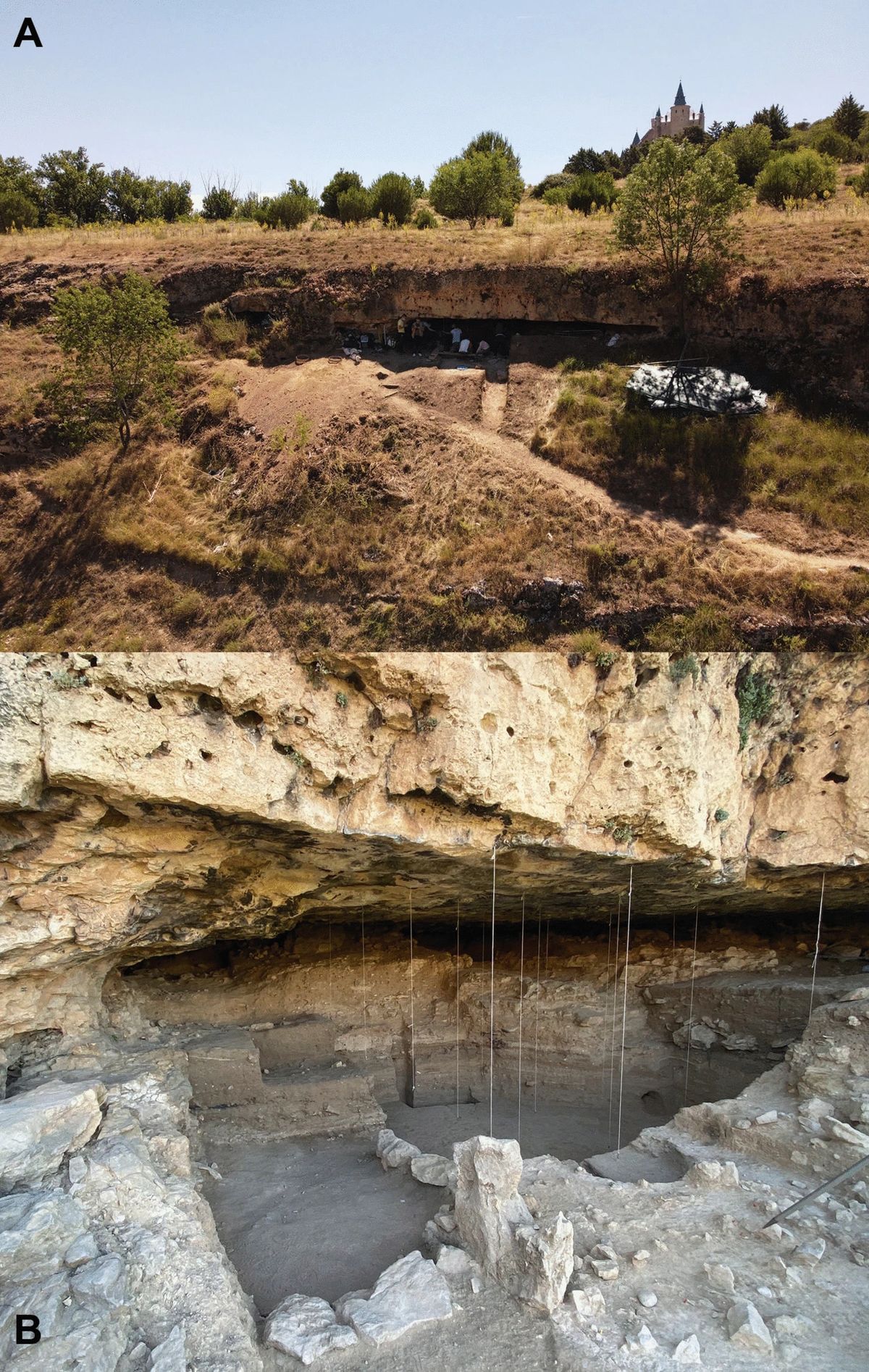This 43,000-year-old fingerprint 🖐️
Published by Adrien,
Source: Archaeological and Anthropological Sciences
Other Languages: FR, DE, ES, PT
Source: Archaeological and Anthropological Sciences
Other Languages: FR, DE, ES, PT
Follow us on Google News (click on ☆)

Microscopic examinations of the red dot revealed the spirals of the Neanderthal fingerprint that created it around 43,000 years ago. Credit: Álvarez-Alonso et al. 2025; CC BY 4.0
This fingerprint, made with red ochre, was left by a Neanderthal, the closest extinct relative of modern humans. Neanderthals disappeared around 40,000 years ago but occupied Europe for hundreds of thousands of years before the arrival of the first modern humans.
The researchers behind a new study argue that the red dot represents a nose on a stone with features resembling a face. This discovery challenges the idea that Neanderthals were generally incapable of symbolic art.
However, some experts are not convinced that the dot is symbolic. Bruce Hardy, an anthropologist and archaeologist, stated that the ochre had been intentionally applied with the fingerprint, but little could be certain beyond that.
The study, published on May 5 in the journal Archaeological and Anthropological Sciences, describes the 2022 discovery at the San Lázaro rock shelter near Segovia in central Spain. Scientists have evidence that the region was densely populated by Neanderthals between 44,000 and 41,000 years ago, and there is no indication that early modern humans lived there.

The stone was excavated from the San Lázaro rock shelter near Segovia in Spain, occupied by Neanderthals between 44,000 and 41,000 years ago. Credit: Álvarez-Alonso et al. 2025; CC BY 4.0
The debate over Neanderthals' ability to create abstract art has raged among archaeologists for decades. Rebecca Wragg Sykes, a Paleolithic archaeologist, believes that even if the red dot is symbolic, the study's authors may have misunderstood its meaning.
Paul Pettitt, an archaeologist at Durham University, said the stone was an "unequivocal example of the use of red pigment by Neanderthals." Derek Hodgson, an expert in prehistoric rock art, noted that this discovery adds to the growing body of objects made by Neanderthals that are non-functional in nature.
What is red ochre and why was it used by Neanderthals?
Red ochre is a natural pigment rich in iron oxide, used since prehistoric times for its coloring properties. Neanderthals potentially used it for symbolic reasons, such as marking objects or bodies, indicating a form of abstract thought.
Its widespread use suggests it played an important role in Neanderthal cultures, though its exact meanings remain a mystery. The discovery of red ochre at archaeological sites provides valuable clues about the behaviors and beliefs of our extinct cousins.
Analysis of ochre residues can also reveal information about collection and processing techniques, shedding light on Neanderthals' technological skills.
How do archaeologists determine the age of prehistoric artifacts?
Archaeologists use various dating methods to determine the age of prehistoric artifacts. Carbon-14 dating is one of the best known, but it is only applicable to organic materials.
For older or inorganic artifacts, such as ochre-marked stones, other techniques like thermoluminescence or uranium-thorium dating can be used. These methods measure the time elapsed since the object was heated or exposed to sunlight.
Combining these techniques with stratigraphic analysis of the geological layers where artifacts are found allows scientists to establish an accurate timeline of prehistoric discoveries.